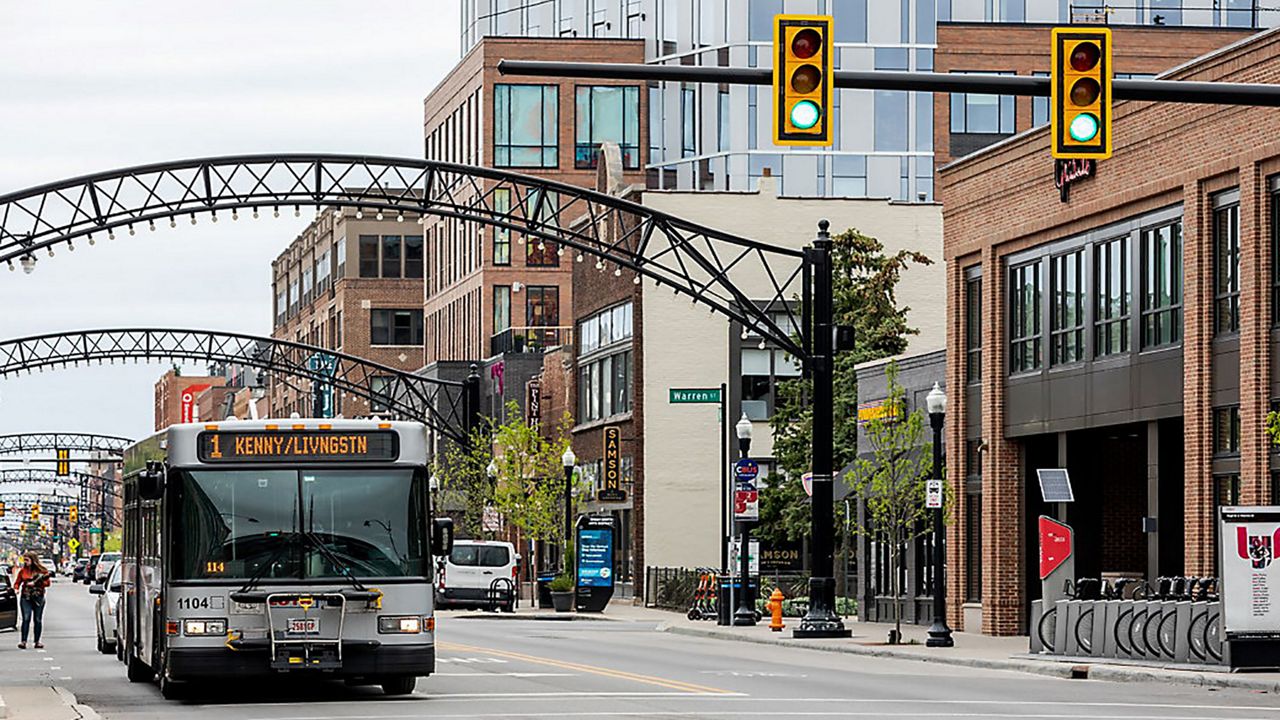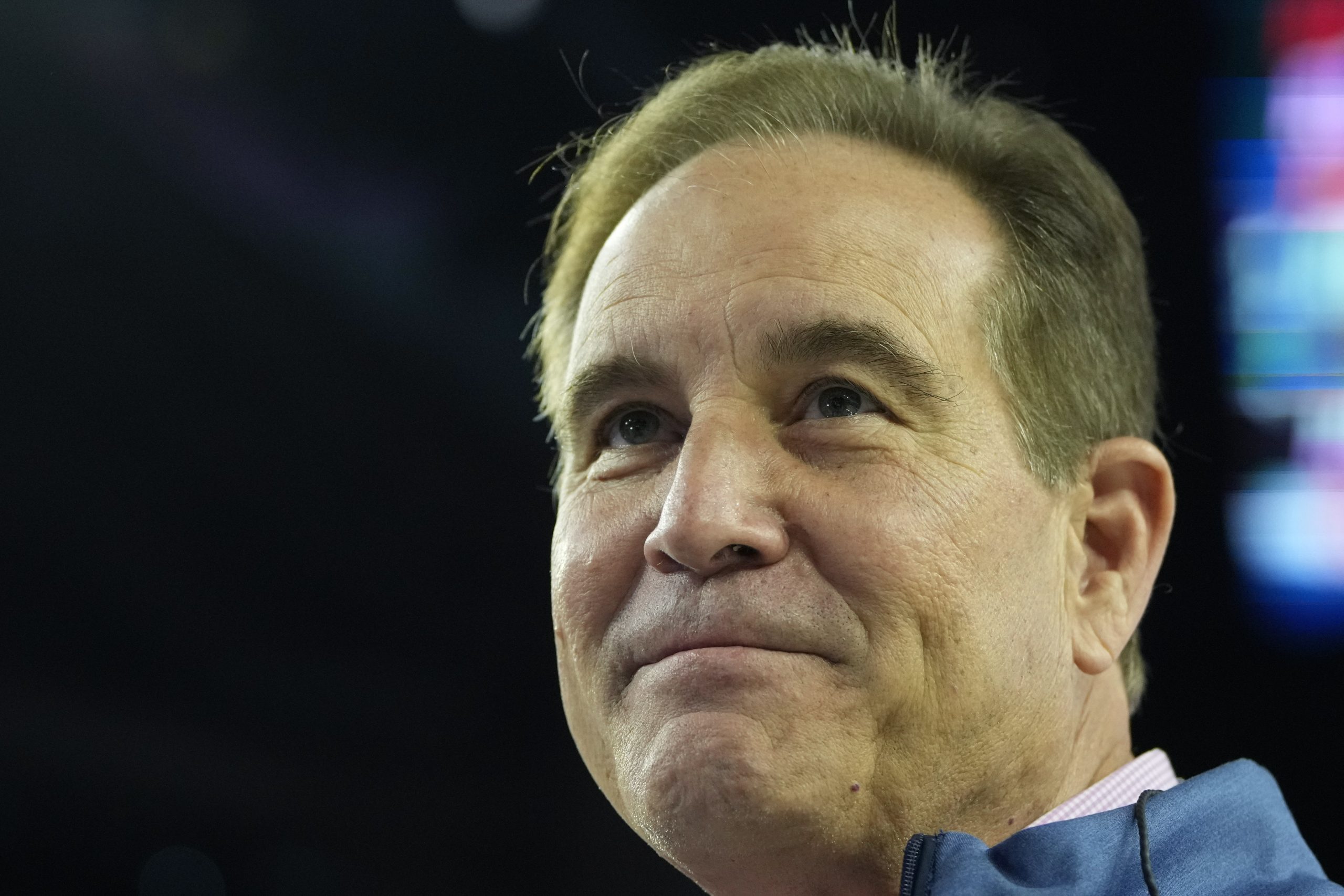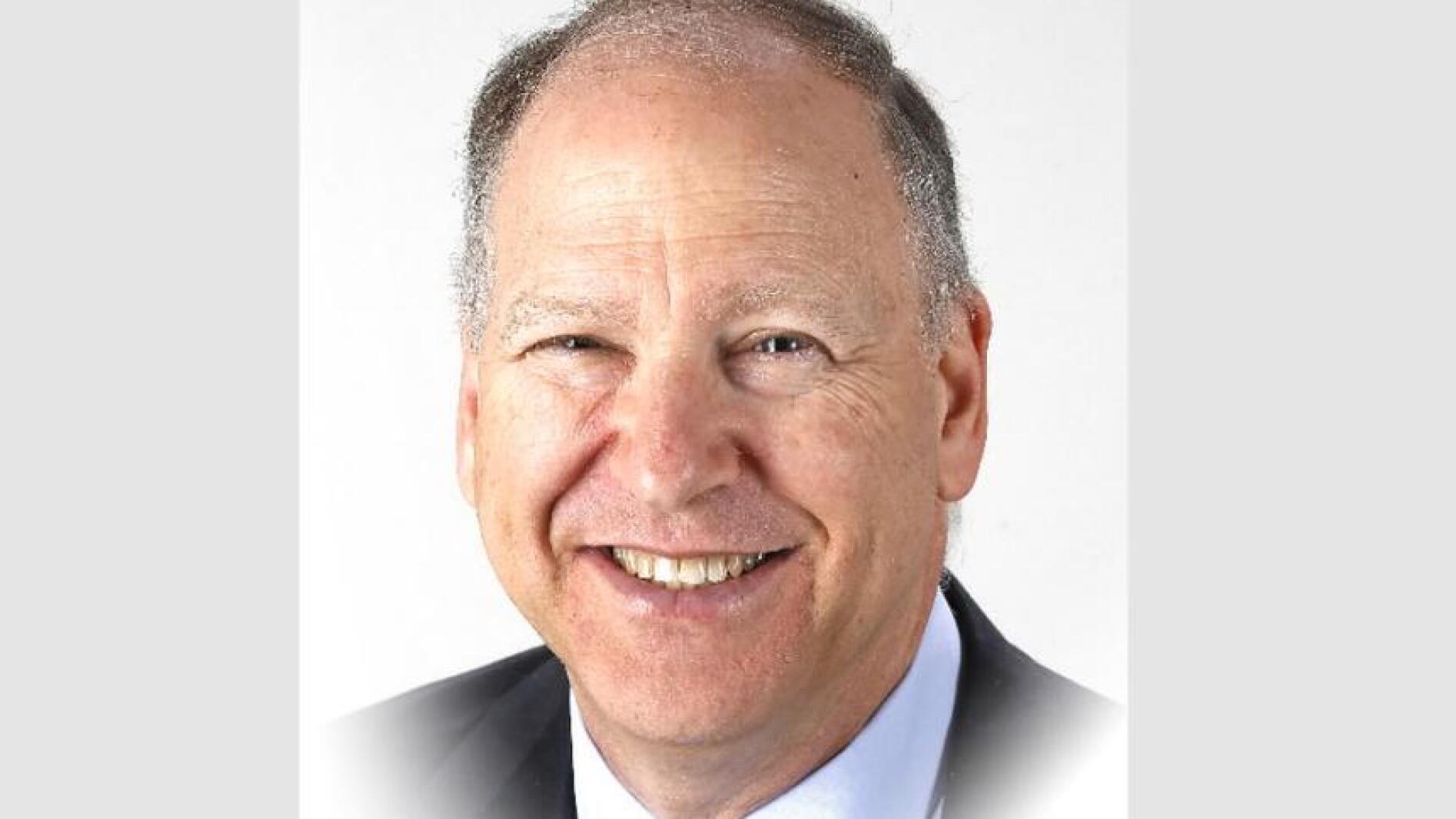California
California’s Newsom, Florida’s DeSantis face off in heated debate

Republican and Democratic rivals clash in fiery Fox News event filled with personal insults.
United States presidential candidate Ron DeSantis and California Governor Gavin Newsom have faced off in a television debate billed as a potential preview of the 2028 presidential race.
The matchup between DeSantis, the governor of Florida, and Newsom, an ally of President Joe Biden who is widely expected to mount a future White House bid, was filled with policy clashes and personal insults.
DeSantis labelled Newsom a liar in charge of a failing state, while Newsom ridiculed his Florida rival as a bully who is badly losing to Republican presidential rival Donald Trump.
“When are you going to drop out and at least give Nikki Haley a shot to take down Donald Trump,” said Newsom, 56, referring to the former South Carolina governor who has beaten DeSantis in some polls as the preferred alternative to Trump.
DeSantis labelled Newsom a “slick, slippery politician whose state is failing”.
“People are leaving California in droves,” he said.
The host, the Fox News Channel, touted the 90-minute event as “The Great Red vs Blue State Debate”.
The debate, hosted by Sean Hannity, was held in a television studio with no audience in Georgia, a key swing state.
As leaders of two of the three most populous states, DeSantis and Newsom have spent much of the past year attacking each other’s policy choices and leadership styles from afar. But on Thursday night, they got their first chance to challenge each other on the same national stage.
The two participants, standing at podiums alone onstage, talked over each other often.
DeSantis, who was elected to his second and final term as governor in November 2022, is grasping for momentum in a 2024 campaign in which Trump remains the overwhelming frontrunner.
Newsom, California’s term-limited Democratic governor, has positioned himself to seek the presidency some day, but like the rest of his party’s most ambitious leaders, he declined to challenge Biden for the Democratic nomination in 2024.

California
Newsom’s latest insurance move could help Californians avoid cancelled policies — but they’ll have to pay

As some Californians continue scrambling for ways to affordably insure their homes, Gov. Gavin Newsom on Friday announced a push to expedite how quickly insurance companies can increase rates.
Speedier approvals for rate hikes is one of the key reforms insurers say is necessary for them to stay afloat amid a growing number of costly claims in the Golden State, especially tied to recent wildfires and other mounting costs of climate change.
Newsom said he is drafting a “trailer bill” that could cut the current approval process down to 60 days — legislation he hopes will quell an exodus of insurers bailing their business out of California and soothe residents’ financial anxieties around canceled policies.
The current process allows the Department of Insurance up to 84 days to approve filings for insurance rate increases, but that timeline can take substantially longer if a public hearing is requested by consumer advocates or other groups.
“We need to stabilize this market,” Newsom said during a Friday press conference about his revised budget proposal. “We need to send the right signals, we need to move.”
While this change may temporarily usher in more expensive bills for consumers, proponents argue the changes will make home insurance more available. In turn, more options may also allow residents to avoid taking their chances with California’s “FAIR Plan,” the state’s “insurer of last resort,” which offers exorbitant premiums compared to regular insurance, and is also inching towards insolvency.
Denni Ritter, the American Property Casualty Insurance Association’s department vice president for state government relations, praised the news about expedited approvals Friday afternoon.
“Expediting the rate review process is a vital component to addressing California’s insurance crisis,” Ritter said in a statement. “We look forward to working with the Administration, Legislature and Department of Insurance on this crucial reform and other reforms necessary to fix our broken regulatory system and increase the availability of insurance for California homeowners, drivers, and businesses.”
The governor said he opted to work with state lawmakers on this “trailer bill,” rather than pursue an executive order to move the process along.
California’s Insurance Commissioner, Ricardo Lara, started working with Newsom last fall to modernize and overhaul three decades of state’s regulations, including efforts to allow insurance companies to use catastrophe models to set rates, as well as bill consumers for the costs of reinsurance, which is insurance for insurers.
Lara said that ongoing work, however, isn’t expected to materialize until December.
That timeline isn’t fast enough in the governor’s eyes. If Newsom’s bill is passed within the state’s budget for 2024-25, it may take effect as early as July 1.
“(Lara’s) team is working their tails off, I know how concerned the legislature is on this,” Newsom said. “But December? I don’t think we have that much time.”
Rather than push back on Newsom’s announcement of his new bill, Lara thanked the governor’s support of his own effort, which has been dubbed the Sustainable Insurance Strategy.
“Newsom is right: time is of the essence,” Lara posted to X, formerly Twitter, on Friday. “Our partnership with the Governor and Legislature are essential to stabilizing our market. We’ve taken significant steps forward, but there is more to do.”
California
California teen rowers, parents left 'shocked' after gunman fires into water during regatta event

Gunfire near a regatta of teen rowers in California during a race, left parents and students “shocked” and “horrified.”
West Sacramento police are investigating the incident after at least three gunshots hit the water near teenage rowers where the Oakland Stroke Rowing Club was racing along the Sacramento River Deep Water Ship Channel on April 20.
There were 15 and 16-year-olds rowing, police said.
CALIFORNIA POSTAL WORKER ROBBED AT GUNPOINT IN BRAZEN DAYTIME ATTACK CAUGHT ON VIDEO: ‘I’M GOING TO DIE’
General rowing team. West Sacramento police are investigating after gunfire was shot near a rowing team in California on April 20. (AP Photo/Camden Courier-Post, Jose F. Moreno)
One parent told FOX 2 that people were “shocked” that gunfire interrupted the “peaceful” setting.
“I was pretty shocked. I think all of us were. It’s horrifying, to think in this peaceful, green setting, the final push of this race – to see and hear that.” Fred Ackerman told the outlet.

French rowers take part in a team practice session on the waters of Grand Parc Miribel Jonage near Lyon, central-eastern France on May 10, 2024. (OLIVIER CHASSIGNOLE/AFP via Getty Images)
Ackerman said that despite there being dozens of people around at the teen sporting event, no one spotted the alleged shooter.
“No one saw the shooter,” he said. “There were dozens and dozens of people, there were boaters and people walking around on the trail. The police don’t know where the shots came from, but they do know it was a gun.”
CLICK HERE TO GET THE FOX NEWS APP
The West Sacramento Police Department is encouraging anyone with information about the gunshots to contact the department’s Investigations Division.
California
California has a multibillion-dollar budget deficit. Here's what you need to know
SACRAMENTO, Calif. (AP) — California has a huge budget problem that could force thorny decisions from Democratic leaders who enjoyed a more than $100 billion surplus just three years ago.
This is the second year in a row the nation’s most populous state is facing a multibillion-dollar shortfall. State revenues have continued to fall amid increasing inflation and a slowdown in the state’s usually robust technology industry.
Democratic Gov. Gavin Newsom on Friday announced his plan to address the deficit in the state’s budget. The release of his plan kicks off a budget negotiation marathon with Democratic lawmakers, who hold supermajorities in both chambers.
Newsom and lawmakers have until June 15 to pass a budget, or lawmakers don’t get paid.
HOW BIG IS THE BUDGET?
Newsom proposed a $288 billion spending plan on Friday for the fiscal year that starts July 1. That is well below the nearly $311 billion budget he signed into law last year. But it is still by far the largest of any state in the country. New York recently passed a $237 billion budget, and Texas and Florida spend far less annually.
WHAT ABOUT THE DEFICIT?
It’s complicated. Newsom announced on Friday a $26.7 billion deficit, but it’s really closer to $45 billion. That’s because Newsom didn’t include roughly $17.3 billion worth of actions he and lawmakers already agreed on. Those included a cut of $3.6 billion in primarily one-time funding to some school, welfare and climate programs. The plan also delays and defers about $5.2 billion in spending for various programs, including $1 billion to fund rail and public transit systems.
WHY DOES THE DEFICIT MATTER?
California’s constitution requires lawmakers and the governor to balance the budget — meaning the state can’t spend more money than it has. That means they have to either find more money by raising taxes, which Newsom doesn’t want to do, or find ways to cut, shift or delay spending. Newsom’s proposal focuses mostly on cuts, but it will also dip into reserve funding.
WHAT ARE THOSE CUTS?
Newsom proposed cuts across 260 state programs. Here are some of the highlights:
1. Eliminating 10,000 vacant state worker jobs for a saving of $762 million. Newsom didn’t immediately provide a list of all the jobs.
2. Clawing back $6.7 billion previously set aside to pay doctors more to see poor patients and immigrants.
3. Shaving off nearly 8% in operating costs to almost all state agencies through actions like getting rid of landlines in state offices and evaluating printing needs.
4. Cutting $2 billion from broadband initiatives to pursue cheaper options
5. Closing housing units with 4,600 beds across 13 state prisons to save $81 million.
6. Reducing funding for homelessness and housing initiatives by nearly $1.2 billion, including $474 million from an anti-foreclosure program to preserve existing affordable housing.
7. Reducing $500 million in water storage funding. He didn’t offer specifics on how that would be applied.
8. Shutting down an in-home service care program that serves 14,000 low-income, undocumented immigrants with disabilities for a savings of $94.7 million
9. Cutting roughly $2 billion from six education programs, including $550 million from an initiative to upgrade preschool and kindergarten facilities and $510 million in scholarships for middle class college students pursuing a teaching credential.
10. Eliminating $352.5 million in funding for state and local public health and $189.4 million from mental health services fund.
HOW ABOUT TAX INCREASES?
Newsom has repeatedly said he could balance the budget without raising taxes. But his proposal calls for the suspension of the widely used net operating loss tax deduction for businesses the following fiscal year, which some are seeing as a tax increase.
He is also increasing the tax on managed care organizations, the private companies that contract with the state to provide Medicaid benefits.
-

 News1 week ago
News1 week agoPolice enter UCLA anti-war encampment; Arizona repeals Civil War-era abortion ban
-

 Politics1 week ago
Politics1 week agoThe White House has a new curator. Donna Hayashi Smith is the first Asian American to hold the post
-

 News1 week ago
News1 week agoSome Florida boaters seen on video dumping trash into ocean have been identified, officials say
-
)
) Movie Reviews1 week ago
Movie Reviews1 week agoThe Idea of You Movie Review: Anne Hathaway’s honest performance makes the film stand out in a not so formulaic rom-com
-

 World1 week ago
World1 week agoUN, EU, US urge Georgia to halt ‘foreign agents’ bill as protests grow
-

 Education1 week ago
Education1 week agoVideo: President Biden Addresses Campus Protests
-

 World1 week ago
World1 week agoIn the upcoming European elections, peace and security matter the most
-

 World1 week ago
World1 week agoArizona Senate repeals near-total 1864 abortion ban in divisive vote















